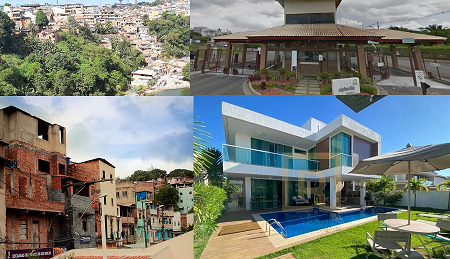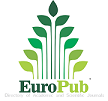Assessing the relation between spatial proximity and socioeconomic integration along interactions between inhabitants of two shanty-towns and their surrounding affluent gated communities in Salvador, Brazil
Visualizações: 394DOI:
https://doi.org/10.20336/rbs.790Keywords:
urban poverty, segregation, neighborhood effectsAbstract
In this research, we shall inquire under what conditions neighborhood effects can be mitigated by the proximity of disadvantaged populations to affluent gated communities. Inferring from interview-based qualitative research conducted in the central shantytown of Calabar and in the peripheral shantytown of Vila Verde, Salvador - Brazil, we can attest the existence of mechanisms that either constrain individuals’ living conditions, such as the influence of drug trafficking, or entail positive effects on their lives, like the community’s collective mobilization. The relationships between socially distant groups have undergone important transformations. The study evinces that the relationship between spatial proximity and socioeconomic integration is conditioned by the existence of public spaces, by the neighborhood's functional autonomy and by the influence of crime. We concluded that, unlike Calabar, the recent construction of the upper-class gated community Alphaville II neither widened the opportunities of socio-economic integration of the poor inhabitants of Vila Verde, given its higher degree of functional autonomy and spatial isolation, nor improved their access to high-quality urban infrastructure, including public security.
Downloads
References
Almeida, Ronaldo, & D’Andrea, Tiaraju. (2004). Pobreza e redes sociais em uma favela paulistana. Novos estudos CEBRAP, 28, 94-106.
Andrade, Luciana T., & Silveira, Leonardo S. (2013). Efeito-território. Explorações em torno de um conceito sociológico. Civitas, 13(2), 381-402.
Atkinson, Ronald, & Blandy, Sarah. (2016). Domestic fortress: Fear and the new home front. Manchester University Press.
Bógus, Lucia M. M., & Pasternak, Suzana (orgs.). (2015), São Paulo: transformações na ordem urbana. Letra Capital.
Burawoy, Michael. (1998). The extended case method. Sociological Theory, 16(1), 4-33. https://doi.org/10.1111/0735-2751.00040
Caldeira, Teresa P. do R. (2000). Cidade de muros. Crime, segregação e cidadania em São Paulo. Edusp.
Friedrichs, Jürgen, Galster, George, & Musterd, Sako. (2003). Neighborhood effects on social opportunities: the European and American research and policy context. Housing Studies, 18(6), 797-806. https://doi.org/10.1080/0267303032000156291
Hita, Maria G., & Gledhill, John. (2009). Anthropologies of the urban periphery: Salvador, Bahia. Brooks World Poverty Institute.
Hannerz, Ulf. (1980). Exploring the city: inquiries toward an urban Anthropology. Columbia University Press.
Häußermann, Hartmut. (2003). Armut in der Großstadt. Die Stadtstruktur verstärkt soziale Ungleichheit. Informationen zur Raumentwicklung, 3/4, 143-157.
Janoschka, Michael, Sequera, Jorge, & Salinas, Luis. (2014). Gentrifica¬ción en España y América Latina. Un diálogo crítico. Revista de geografia Norte Grande, (58), 7-40. https://dx.doi.org/10.4067/S0718-34022014000200002
Kaztman, Ruben, & Filgueira, Carlos. (2006). Las normas como bien público y como bien privado: reflexiones en las fronteras del enfoque AVEO. Universidad Católica.
Kowarick, Lucio. (2009). Viver em risco. Sobre a vulnerabilidade socioeconômica e civil. Editora 34.
Lees, Loretta. (2008). Gentrification and social mixing: towards an inclusive urban renaissance? Urban Studies, 45(12), 2449-2470. https://doi.org/10.1177/0042098008097099
Lees, Loretta, Shin, H. B., & López-Morales, Ernest. (2016). Planetary gentrification. Cambridge.
Luckmann, Thomas & Berger, Peter L. (1991). The social construction of reality: a treatise in the sociology of knowledge. Penguin Books.
Marques, Eduardo C. de L. (2010). Redes sociais, segregação e pobreza. Editora Unesp.
Ribeiro, Luiz C. de Q. (2008). Proximidade territorial e distância social: reflexões sobre o efeito de lugar a partir de um enclave urbano. VeraCidade, 3(3), 1-21.
Ribeiro, Luiz C. de Q., & Lago, Luciane de C. (2000). O espaço social das grandes metrópoles brasileiras: Rio de Janeiro, São Paulo e Belo Horizonte. Cadernos Metrópole, 4, 9-32.
Ribeiro, Luiz C. de Q. et al. (orgs.). 2010. Desigualdades urbanas, desigualdades escolares. Letra Capital.
Roberts, Bryan R., & Wilson, Robert H. (2009). Urban segregation and governance in the Americas. Palgrave Macmillan.
Ruiz-Tagle, Javier. (2016). La Persistencia de la segregación y la desigualdad en barrios socialmente diversos: un estudio de caso en la Florida. EURE, 42(125), 81-108. http://dx.doi.org/10.4067/S0250-71612016000100004
Sabatini, Francisco, & Salcedo, Rodrigo. (2007). Gated communities and the poor in Santiago, Chile: functional and symbolic integration in a context of aggressive capitalist colonization of lower-class areas. Housing Policy Debate, 18(3), 577-606. https://doi.org/10.1080/10511482.2007.9521612
Sampson, Robert J. (2012). Great American city. Chicago and the enduring neighborhood effect. Chicago University Press.
Sassen, Saskia. (1999). Service employment regimes and the new inequality. In E. Mingione (org.), Urban poverty and the underclass: a reader (pp. 64-82). Blackwell Publishers.
Small, Mario L., & Feldman, Jessica. (2012). Ethnographic evidence, heterogeneity, and neighbourhood effects after moving to Opportunity. In M. Van Ham, D. Manley, & N. Bailey (org.), Neighbourhood effects research: new perspectives (pp. 57-77). Springer.
Wacquant, Loic. (2016). Urban outcasts. A comparative sociology of advanced marginality. Polity Press.
Wilson, William J. (1987). The truly disadvantaged: the inner city, the underclass and public policy. Chicago University Press.

Downloads
Published
How to Cite
Issue
Section
License
Copyright (c) 2022 Stephan Treuke

This work is licensed under a Creative Commons Attribution 4.0 International License.
All content of the journal, except where identified, is licensed under a Creative Commons attribution-type 4.0 International














